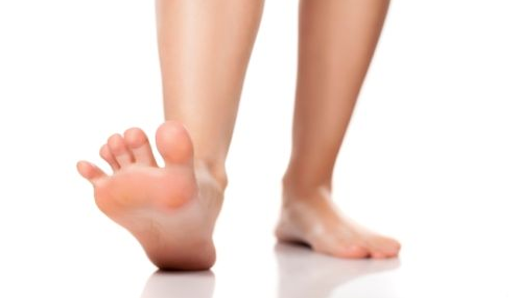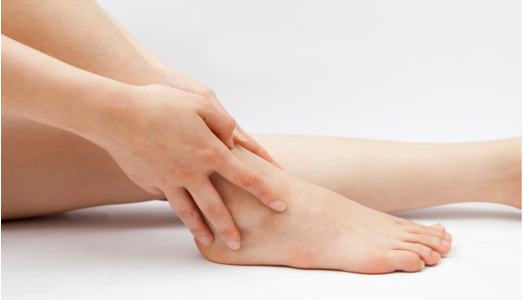Everyone has worn blisters on their toes and heels, especially those who love fitness; whether you are walking, running, playing basketball, football, or even cycling, it may cause blisters on your feet. Production is a protective response of the body. When the outer layer of the skin of the foot is damaged by strong friction, the blisters "come forward," which not only protects the underlying skin from being involved but also ensures that the damaged skin has room to regenerate smoothly. Under normal circumstances, parts with thicker stratum corneum, such as the soles of the feet, heels, etc., are the focus of exercise and are prone to repeated strokes. Preventing blisters doesn't mean we need to exercise less. There are some simple precautions we can take to stay active and keep our feet healthy.
What causes blisters on the soles of the feet?
First, plantar blisters are like any other; they are caused by shear deformation of the skin. You can think of cutting as stretching - the skin stretches back and forth with each step. These are the factors that contribute to the shear deformation of blistering:
Pressure: This is the weight-bearing area of your foot, more so than most other parts of the foot.
Moving bones: You may not realize it, but the bones of the feet move a lot under the skin, especially the bones of the feet.
Skin Type: The skin on the bottom of the foot is thicker and less mobile than the rest of the foot, which is good for blisters. Also, there are more sweat glands on the soles of the feet compared to other areas, which leads to high friction levels.
High friction: Warm and damp in the shoe. This means high friction levels - things are wet and sticky. What's more, the fabrics in your socks and shoes are made of relatively high-friction materials. This fits perfectly because it helps keep your foot stable in the shoe. It's only a problem if we get blisters. Thankfully, there is an easy way to fix this.
Repetition: The longer the skin stretches back and forth, the more likely it is to tire. Tears develop beneath the skin's surface when the connections between skin cell fatigue. Within two hours, the injured area fills with fluid, blistering the surface of the skin that looks and feels like blisters as we know them.
Anatomically, where the metatarsal heads are located, these are weight-bearing bones, so the skin is under high pressure. As part of normal healthy foot function, the metatarsal heads move back and forth under the skin. If it is affected by gravity and friction for a long time, it will easily form blisters.
Best Strategies for Preventing Foot Blisters
Find the right shoes for your feet: a shoe that's too small, a toe that's too small and tight (squeezing too tightly), or too big (too much room and your feet rubbing all over the place) can all lead to blisters on your feet, And everyone's feet are different, some people have narrow feet, and some have wide feet. Some have high arches; some have flat feet. Therefore, it is important to choose shoes that fit your feet to protect you from the development of blisters. If you're a runner, consider buying shoes half a size larger than others to give your toes room to move while you run. Our skin thickens with repetitive activity.
Our body protects itself by forming calluses. As we gradually increase activities such as running, our skin adapts by thickening to better withstand friction. If you experience skin irritation, wherever blisters develop on your feet , stop moving as soon as possible. Overcoming pain increases damage at an exponential rate. When you stop exercising immediately, you may be able to resume your desired activity more quickly.
How long does it take for blisters to heal?
If you leave it alone, it should heal quickly. "Blisters usually heal on their own within a few days."
How do make blisters heal faster?
If you can't wait a few days, you can pick it up, but be careful to operate aseptically to avoid microbial invasion that could lead to infection. Sanitize hands and blisters before touching them. Use a sterile needle to pierce the edge of the blister to release the fluid, and then use the Innomed ® blister plaster to stick to the blister, which can effectively help the wound heal quickly and prevent microbial invasion.
Good things to prevent blisters
Innomed ® blister plaster
This is the best way to protect the friction under the ball of your foot - it will last. The patch sticks to the insole, they stay there forever, and the stickiness is good, and it has a waterproof membrane on the surface that doesn't come off easily even if the foot sweats, preventing blisters. If you need more extensive protection, you can stick it on other parts that are easy to wear, even if there are blisters; if the diameter of the blisters exceeds a millimeter, it can be broken, and then use Innomed ® blister plaster to stick to the blisters, which can help your wound quickly—healing and avoiding microbial invasion to prevent blister infection.
If your shoes are prone to blistering, you can stick a blister plaster like this on the heel or ball of your foot where it touches the shoe; it will keep you comfortable and avoid chafing.
For more information on Innomed ® dressings, refer to the previous articles. If you have customized needs, you are welcome to contact us; we will serve you wholeheartedly.
At Longterm Medical, we transform this data by innovating and developing products that make life easier for those who need loving care.
Editor: kiki Jia
Date: August 1, 2022

 English
English عربى
عربى Español
Español русский
русский 中文简体
中文简体








